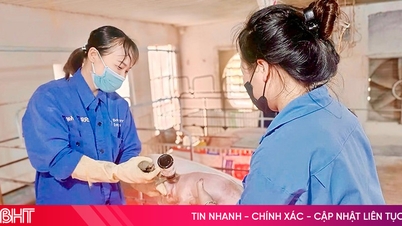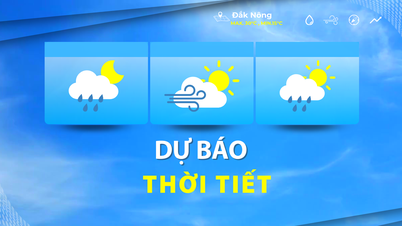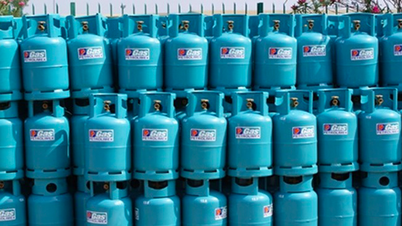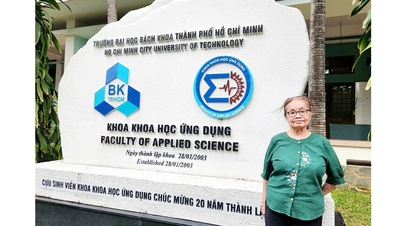Many banks plan to open insurance companies
According to the analysis team of Vietcap Securities Company, the insurance penetration rate in Vietnam is still low. Therefore, banks will likely continue to promote the bancassurance channel - cross-selling insurance through banks - by combining it with preferential interest rates on loans or savings deposits to attract customers to buy insurance products. However, the analysis team believes that this channel will develop more slowly than in the past 10 years and require stricter legal compliance.
On April 28, 2025, the Annual General Meeting of Shareholders of VPBank (stock code: VPB) approved the plan to establish a subsidiary operating in the field of life insurance with an expected charter capital of VND 2,000 billion. This company will provide basic life insurance products, health insurance, universal insurance and other services in accordance with the law, subject to approval by the Ministry of Finance.
Mr. Bui Hai Quan - Vice Chairman of VPBank's Board of Directors - said that owning its own insurance company helps the bank proactively control the entire value chain from products, business models to customer files, instead of depending on distribution partners. Life insurance activities will also be closely linked with banking activities, contributing to effectively exploiting the existing customer ecosystem.
In 2024, VPBank's insurance segment recorded revenue of VND 4,151 billion, an increase of 41.31% over the same period and 23.76% compared to 2022 - the time before the market crisis.
At the recent shareholders' meeting, Mr. Jens Lottner - General Director of Techcombank - said that the bank has established a non-life insurance company, providing products such as car and motorbike insurance... At the same time, Techcombank is also completing the application to establish a life insurance company, expected to launch the product by the end of 2025 - if approved by the Ministry of Finance in time.
By 2035, Techcombank aims to increase insurance revenue four times that of 2024, reaching about VND84,000 billion. Mr. Jens Lottner emphasized that life and non-life insurance will play an important role in the strategy of enhancing customer experience and value, while creating a competitive advantage for the bank.
Previously, Techcombank's Board of Directors approved the establishment of TCLife life insurance company - Techcombank Life Insurance - with a charter capital of VND 1,300 billion, of which Techcombank contributes 80%, after terminating exclusive cooperation with Manulife in 2024.
Experts say that although the insurance market is no longer in its "golden age", with recent regulatory policies, the business environment will be more transparent and sustainable. There is still room for growth, but the pace will slow down and require strict legal compliance.
Statistics show that last year, banks earned thousands of billions of VND from the insurance sector. MB led with revenue of VND8,443 billion, followed by VPBank (VND4,151 billion), Techcombank (VND605.7 billion), LPBank (nearly VND565 billion), VIB (VND447 billion) and TPBank (VND368.4 billion). In terms of growth rate, Kienlongbank led with an increase of 44.35%, followed by VPBank (41.31%) and SeABank (35.35%).

Banks aim to perfect the ecosystem
According to the provisions of the Law on Credit Institutions, commercial banks are not allowed to directly conduct insurance business but must conduct this activity through the establishment or acquisition of subsidiaries and affiliates. The limit on capital contribution and share purchase is adjusted according to the provisions of the State Bank and related legal documents.
In Vietnam, banks holding large stakes in insurance companies is an increasingly popular trend. Not only VPBank and Techcombank, but many other banks are also actively increasing their presence in the life insurance sector through investment strategies or expanding ownership. Some large banks have completed documents or are promoting plans to establish life insurance companies. For banks that already have insurance joint ventures, the current goal is to increase ownership ratio and promote internal initiatives to increase market share.
For example, the 2023 annual report shows that Agribank is holding more than 52% of shares in Agricultural Bank Insurance Joint Stock Company (ABIC). Similarly, MB owns up to 68.37% of shares in Military Insurance Joint Stock Corporation (MIC) according to the 2024 report. BIDV is also a major shareholder in BIDV Insurance Joint Stock Corporation (BIC), and together with the joint venture established BIDV MetLife Life Insurance Company Limited. VietinBank has also invested capital to establish VietinBank Insurance Joint Stock Corporation (VBI). With BSH, although it has a strategic partner, DB Insurance (Korea), SHB still holds 4.29% of shares.
Banks’ investment in the insurance sector not only helps diversify business activities and generate non-credit revenue, but also contributes to perfecting the comprehensive financial ecosystem. VPBank’s leadership representative said that the bank is implementing a multi-industry financial group model with banking, consumer finance (FE Credit), securities (VPBank Securities), non-life insurance (OPES), and will continue to expand into life insurance and fund management to complete the financial service chain.
On the other hand, the participation of banks also brings clear benefits to the insurance market, helping to improve competitiveness, modernize technology, expand the distribution network and attract more insurance participants.
Source: https://baodaknong.vn/vi-sao-bao-hiem-khong-con-hap-dan-ngan-hang-van-muon-chen-chan-251152.html






![[Photo] Bustling construction at key national traffic construction sites](https://vphoto.vietnam.vn/thumb/1200x675/vietnam/resource/IMAGE/2025/5/2/a99d56a8d6774aeab19bfccd372dc3e9)





![[Video]. Building OCOP products based on local strengths](https://vphoto.vietnam.vn/thumb/402x226/vietnam/resource/IMAGE/2025/5/3/61677e8b3a364110b271e7b15ed91b3f)











![[Photo] Binh Thuan organizes many special festivals on the occasion of April 30 and May 1](https://vphoto.vietnam.vn/thumb/1200x675/vietnam/resource/IMAGE/2025/5/1/5180af1d979642468ef6a3a9755d8d51)
![[Photo] "Lovely" moments on the 30/4 holiday](https://vphoto.vietnam.vn/thumb/1200x675/vietnam/resource/IMAGE/2025/5/1/26d5d698f36b498287397db9e2f9d16c)



































































Comment (0)